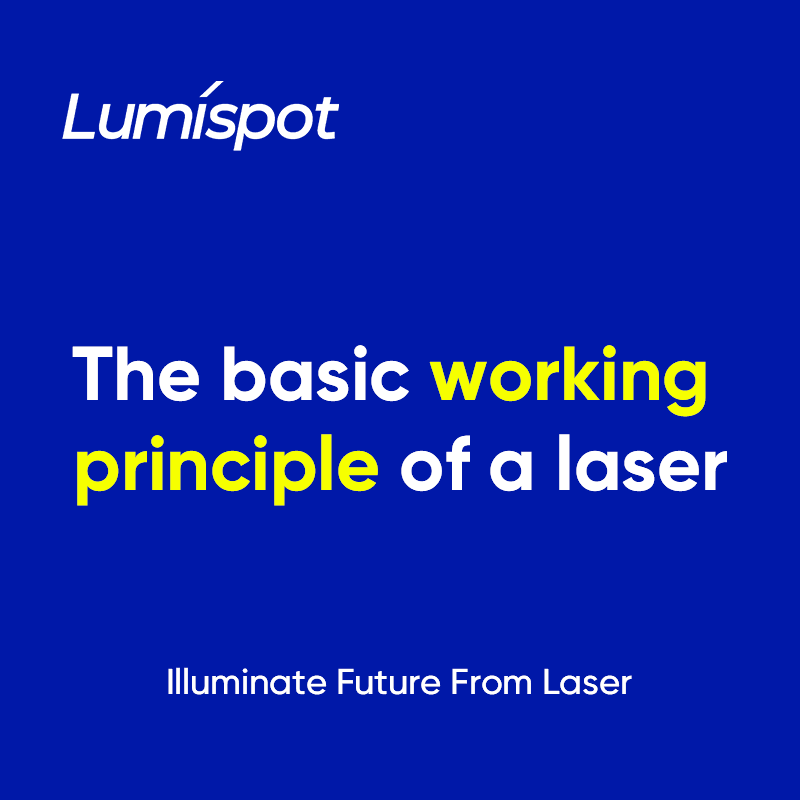1. Stimulated Emission
Stimulated emission is the fundamental principle behind laser generation, first proposed by Einstein in 1917. This phenomenon describes how more coherent photons are produced through the interaction between light and excited-state matter. To better understand stimulated emission, let’s start with spontaneous emission:
Spontaneous Emission: In atoms, molecules, or other microscopic particles, electrons can absorb external energy (such as electrical or optical energy) and transition to a higher energy level, known as the excited state. However, excited-state electrons are unstable and will eventually return to a lower energy level, known as the ground state, after a short period. During this process, the electron releases a photon, which is spontaneous emission. Such photons are random in terms of frequency, phase, and direction, and thus lack coherence.
Stimulated Emission: The key to stimulated emission is that when an excited-state electron encounters a photon with an energy matching its transition energy, the photon can prompt the electron to return to the ground state while releasing a new photon. The new photon is identical to the original one in terms of frequency, phase, and propagation direction, resulting in coherent light. This phenomenon significantly amplifies the number and energy of photons and is the core mechanism of lasers.
Positive Feedback Effect of Stimulated Emission: In the design of lasers, the stimulated emission process is repeated multiple times, and this positive feedback effect can exponentially increase the number of photons. With the help of a resonant cavity, the coherence of photons is maintained, and the intensity of the light beam is continuously increased.
2. Gain Medium
The gain medium is the core material in the laser that determines the amplification of photons and the laser output. It is the physical basis for stimulated emission, and its properties determine the frequency, wavelength, and output power of the laser. The type and characteristics of the gain medium directly affect the application and performance of the laser.
Excitation Mechanism: Electrons in the gain medium need to be excited to a higher energy level by an external energy source. This process is usually achieved by external energy supply systems. Common excitation mechanisms include:
Electrical Pumping: Exciting the electrons in the gain medium by applying an electric current.
Optical Pumping: Exciting the medium with a light source (such as a flash lamp or another laser).
Energy Levels System: Electrons in the gain medium are typically distributed in specific energy levels. The most common are two-level systems and four-level systems. In a simple two-level system, electrons transition from the ground state to the excited state and then return to the ground state through stimulated emission. In a four-level system, electrons undergo more complex transitions between different energy levels, often resulting in higher efficiency.
Types of Gain Media:
Gas Gain Medium: For example, helium-neon (He-Ne) lasers. Gas gain media are known for their stable output and fixed wavelength, and are widely used as standard light sources in laboratories.
Liquid Gain Medium: For example, dye lasers. Dye molecules have good excitation properties across different wavelengths, making them ideal for tunable lasers.
Solid Gain Medium: For example, Nd(neodymium-doped yttrium aluminum garnet) lasers. These lasers are highly efficient and powerful, and are widely used in industrial cutting, welding, and medical applications.
Semiconductor Gain Medium: For example, gallium arsenide (GaAs) materials are widely used in communication and optoelectronic devices such as laser diodes.
3. Resonator Cavity
The resonator cavity is a structural component in the laser used for feedback and amplification. Its core function is to enhance the number of photons produced through stimulated emission by reflecting and amplifying them inside the cavity, thus generating a strong and focused laser output.
Structure of the Resonator Cavity: It usually consists of two parallel mirrors. One is a fully reflective mirror, known as the rear mirror, and the other is a partially reflective mirror, known as the output mirror. Photons reflect back and forth within the cavity and are amplified through interaction with the gain medium.
Resonance Condition: The design of the resonator cavity must meet certain conditions, such as ensuring that photons form standing waves inside the cavity. This requires the cavity length to be a multiple of the laser wavelength. Only light waves that meet these conditions can be effectively amplified inside the cavity.
Output Beam: The partially reflective mirror allows a portion of the amplified light beam to pass through, forming the laser’s output beam. This beam has high directionality, coherence, and monochromaticity.


